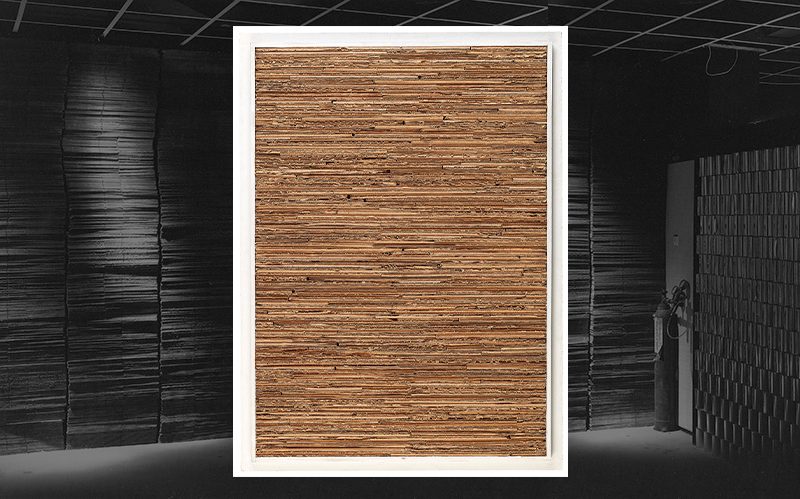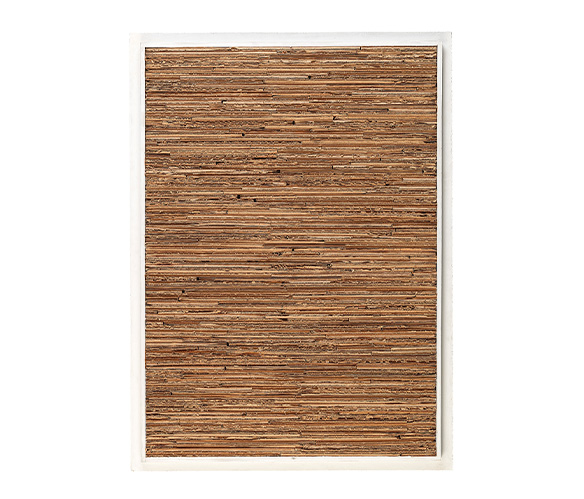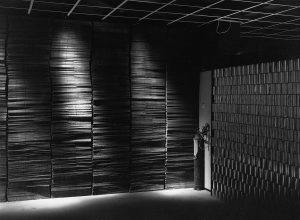
DUTCH TENDENCIES
Jan J. Schoonhoven was a co-founder of the Dutch “Nul” movement and a leading European ZERO artist. His monochrome paper and cardboard objects plumb the material essence of reality. An early work is coming up for sale at Dorotheum.
In July 1962, Jan Schoonhoven and the other members of the Dutch “Nul” Group (Armando, Jan Henderikse and Henk Peeters), exhibited at Galerie Wulfengasse 14 in Klagenfurt. “Neue holländische Tendenzen” (“New Dutch Tendencies”) was their first exhibition abroad, showing a transition from Informel painting, to non-painterly works in the spirit of ZERO. Schoonhoven had been working on his distinctive monochrome white reliefs, made of papier-mâché, paper and cardboard since 1960. It was these works that gained him international recognition, as one of Europe’s foremost ZERO artists.

In an artist’s text from 1965 entitled: „Zero“, De nieuwe stijl. Werk van de internationale avant-garde 1, Schoonhoven wrote about his concept of ZERO, of showing “(…) reality in essence, (…) of localized things in isolated clarity. The aim is to ground reality as art, in an impersonal way.” The untitled relief from 1964 presented here for sale, is a remarkable demonstration of such reductionist ideas.

IInstallation, cardboard, Haags Gemeentemuseum (Kunst Museum), The Hague, 1964
Photo: Oscar van Alphen
The concept for this relief is closely linked to the 1964 exhibition “ZERO-0-Nul” at the Gemeentemuseum in The Hague (see photo), at which Heinz Mack, Otto Piene and Günther Uecker also exhibited. To distinguish themselves from German ZERO, the Dutch artists focussed on creating installations made from readymade objects and industrial materials. In preparation, the artists visited a paint factory, in search of suitable materials. In the attic of the factory, Schoonhoven stumbled upon a supply of folded cardboard boxes. These boxes reminded him of his earlier reliefs composed of horizontal strips of cardboard, which had also been exhibited in Klagenfurt in 1962. “Those [boxes] formed a complete wall, the way my reliefs look. (…) So that’s how they came to be moved to the museum.”
In Schoonhoven’s untitled installation from 1964, strips of corrugated cardboard create a pattern of light and shadow, reinforced by a loosely stacked structure. The installation inspired him to create a number of reliefs further exploring this concept. The work presented here, is one of the earliest examples. These were possibly his “most distinct ZERO reliefs” according to Schoonhoven: “I’ve always had the feeling that these [works] emerged mainly out of ZERO theories, about isolating materials in order to give them a new reality.”
AUCTION
Post-War and Contemporary Art, 25 November 2020
Palais Dorotheum, Dorotheergasse 17, 1010 Vienna
20c.paintings@dorotheum.at
Tel. +43-1-515 60-358, 386













